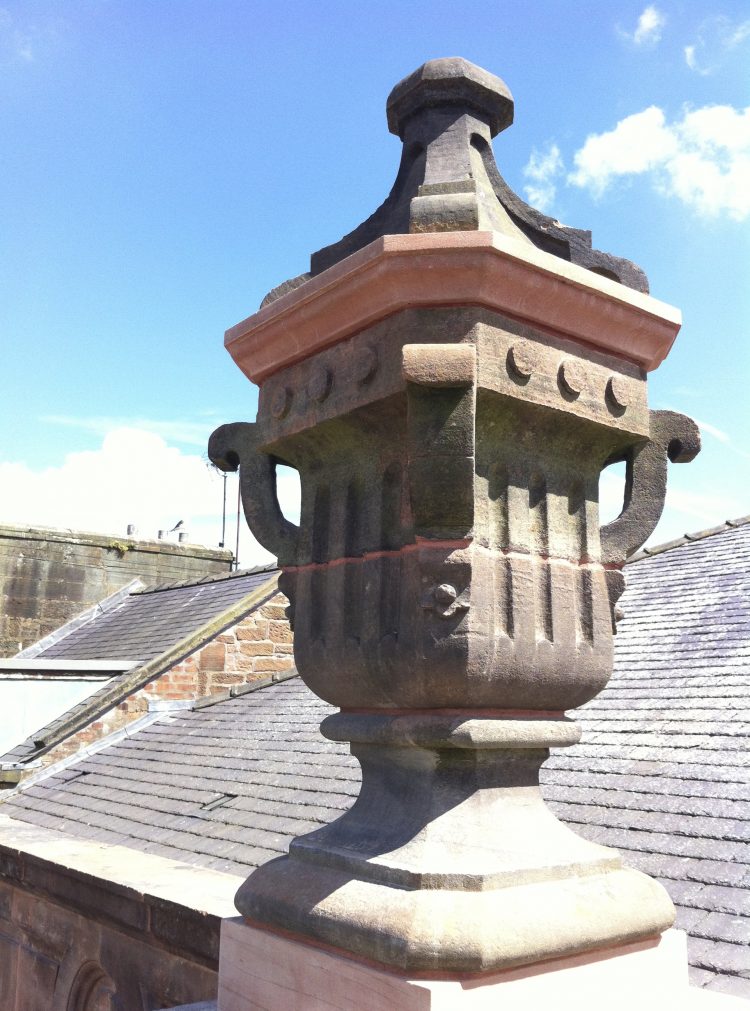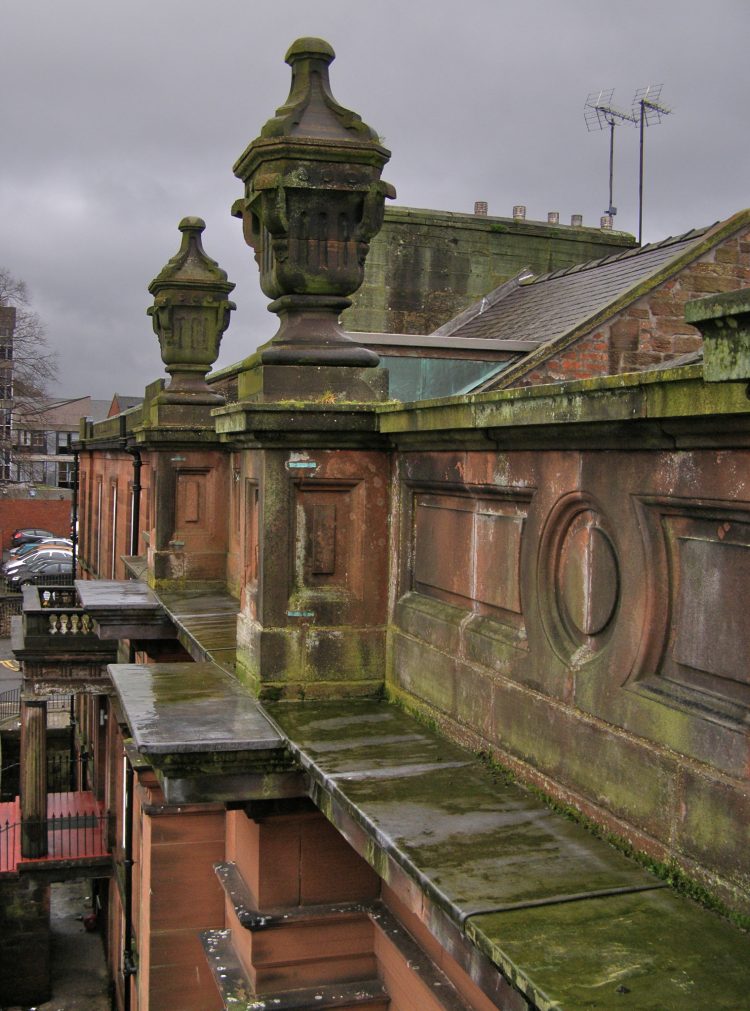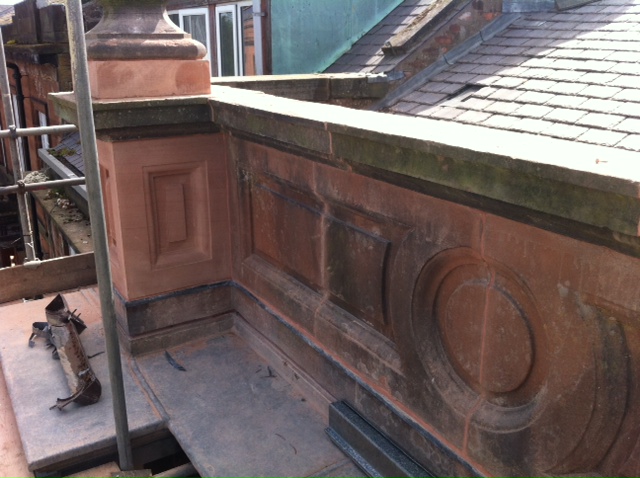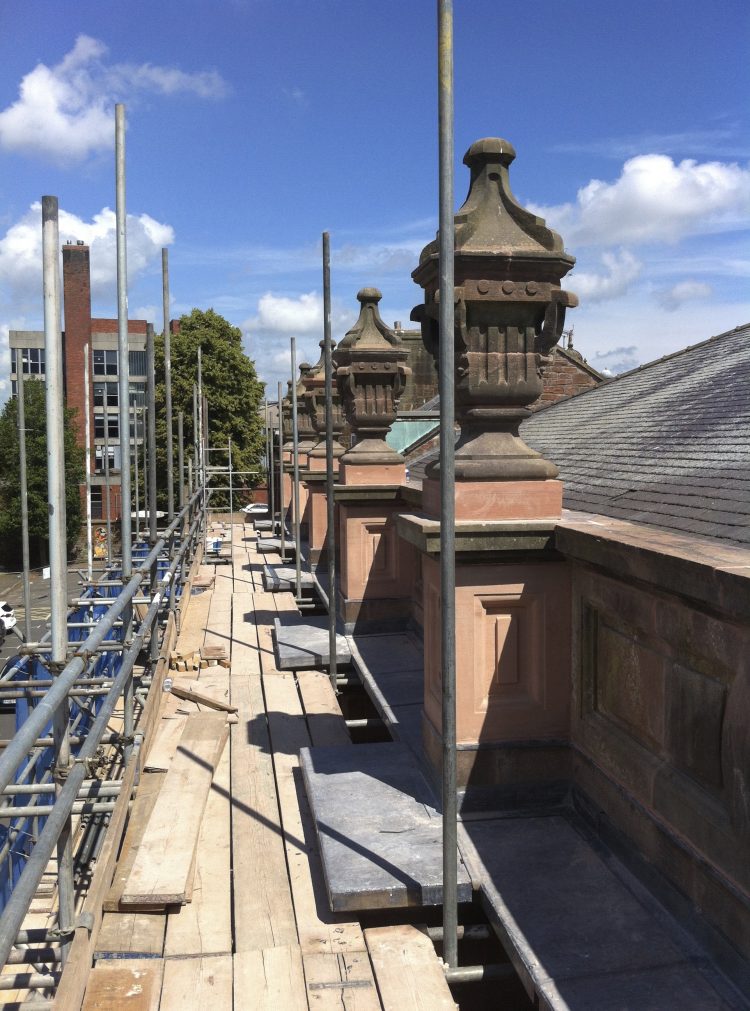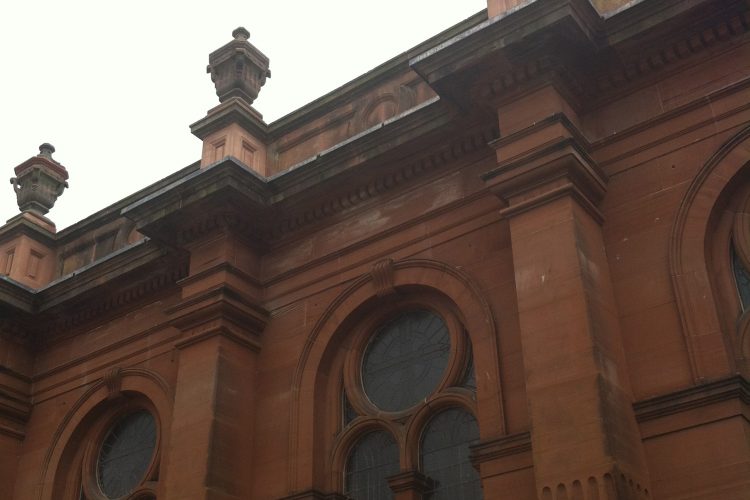The Church dates from 1843-44 as a Free Church. It was remodelled by James Halliday in 1892-1893. This introduced the ambitious 5 bay Italianate front surmounted with very large urns. The church is Category B Listed within a Conservation Area. Following initial works by a Structural Engineer to stabilise one of the urns and the Church initially approached the Heritage Lottery Fund (HLF) Repair Grants for Places of Worship Scheme for assistance. As a result of being RIAS accredited conservation accredited architects we were appointed to provide full architectural services.
We carried out a condition survey of the north wall of the building at the earliest opportunity. This included arranging for a cherry picker to allow a detailed inspection and survey to be carried out at high level. This approach provided thorough and comprehensive design information including, comprehensive large scale detail drawings and a full descriptive specification that describes materials and the required quality of workmanship. During this inspection at high level it was apparent the urns were at significant risk of falling from high level and we arranged for these to be temporarily stabilised and thereafter arranged for an emergency package of works to be prepared and negotiated with a stonemason contractor. Following acceptance in the interest of public safety the urns were carefully dismantled recorded and stored safely off-site until such a time they could be reinstated.
The tender process was programmed to run concurrently whilst the HLF Delivery Phase funding application was being determined. We ensured the pre-contract programme was carefully co-ordinated with the determination HLF funding process and would ensure works could commence as soon as funding was approved and during limeworks season. The HLF funding application was successful and approval was provided for the maximum grant available allowing works to commence on-site without delay.
We worked very closely with the design team and ensured sufficient design and contract information was available as soon as decisions were made to allow for cost reporting to be as accurate and current as possible. As works were being carried out became apparent several of parapet stones were in a condition that meant they could be reused and with the approval of the HLF officer we arranged for areas of the building out-with the original scope of works to be inspected and carefully considered in order of priority of repair. This approach of prioritising cost control allowed for additional works to be identified, considered / approved by HLF, instructed and completed at an early stage whilst being contained within the original programme period and budget.
This project allowed an important historic feature of the urns to this prominent listed building to be reinstated securely, no longer being a health and safety risk or being lost forever.
